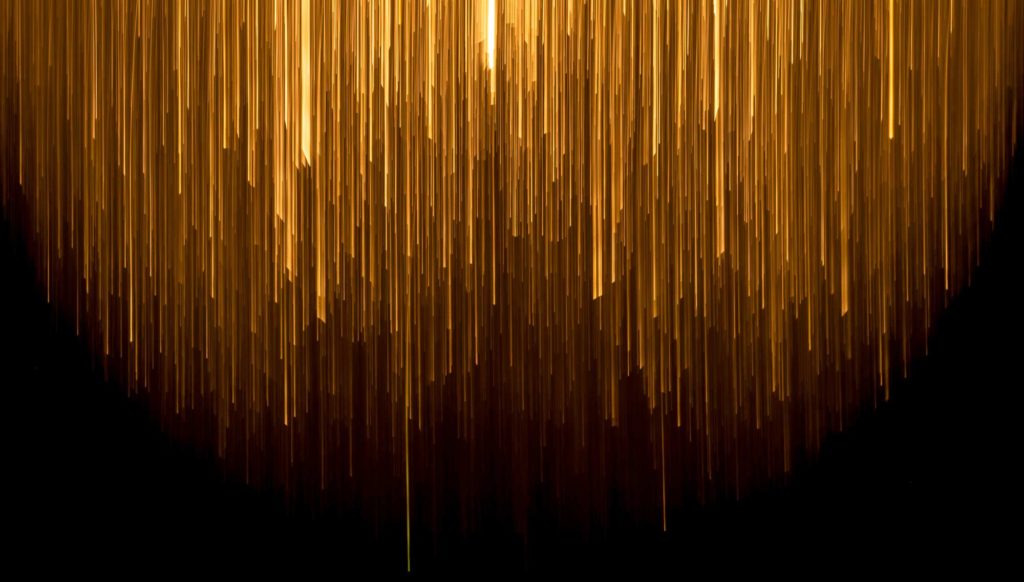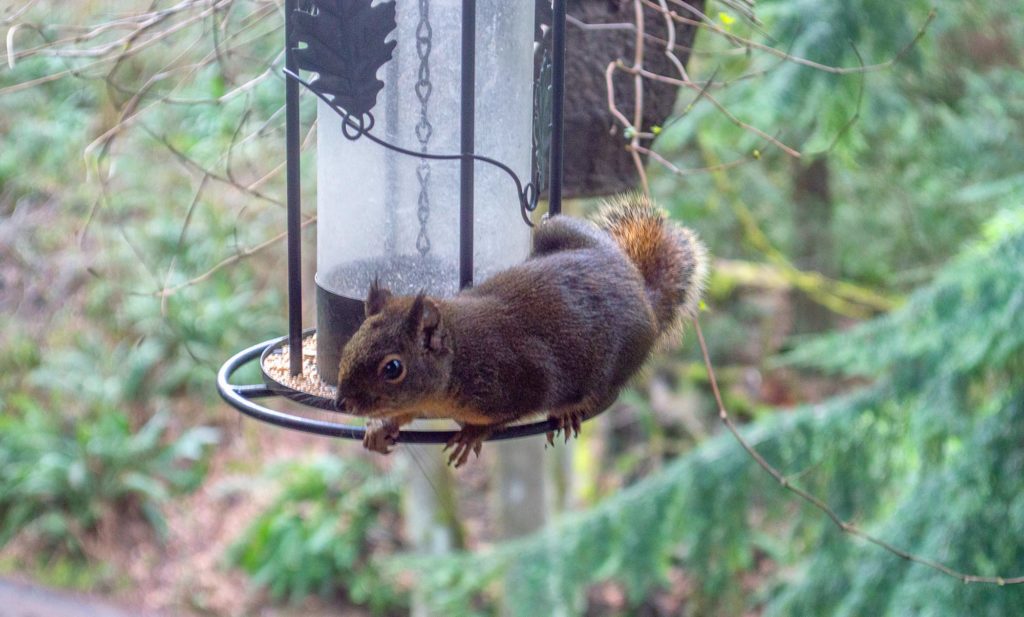
The City at night is a particularly beautiful place—and also, to our Western urban eyes, probably quite alien. Compared to Western cities in the real world, the City inverts the use of space and light. In the real world, we illuminate spaces at night. If you stood at the edge of the atmosphere and looked down at a real world city at night, you would see a glimmering net of lights stretched across every corner. From orbit around the planet of the Passionate Pantheon, this is not what you’d see. The City illuminates not streets or walkways, but people. Every glimmer and twinkle represents a person, an individual going about life. Clusters of light move and shift as people gather and then disperse.
This isn’t just a different way to think about illumination, it’s a different way to think about space—about the distinction between public and private, about how people are expected to use space, about how space is controlled, even about what is and is not acceptable access to space, and for whom. In our real world, access is often dependent on your status — the more power and privilege you have, the more spaces you can access, and the more you live your life in the light. Light is, and always has been, symbolic of existence, of acknowledgement.
They reached a pathway, paved with smooth brown stone that was entirely clear of snow. As the darkness grew, a tiny flying dronelight zipped down from overhead, its light switching on as it approached. It glided just above their heads, lighting their way.
They walked for a time, following the meandering path through a series of small parks. At one point, they passed three people sitting on top of a large marble cube in the corner of a tiny triangular cluster of trees. A woman sat nude on one of her lover’s laps, impaled on his erection. The other figure kissed the back of her neck while he caressed her breast with one hand.
She waved languidly to them as they walked passed. “Hi! Would you like to join us?”
Terlyn looked at Donvin. He shrugged.
“No thanks,” Terlyn said. “Maybe next time.”
“Okay…oh!” the woman said. She moaned, her face buried in her lover’s neck. Ice crystals glittered in her hair.
They continued on, the enormous ziggurat of the temple of the Sun God behind them, the great towers of the housing district at the outer edge of the City before them. Eventually, they reached a float tube that ascended to the stacked tracks of the high-speed transport system overhead. The dronelight zipped away.
Hand in hand, they stepped into the illuminated float tube. After a brief moment of vertigo, they ascended in weightlessness to the first track, three stories above the ground. Another track ran parallel to it three stories above, and another above that, all following the curve of the City’s outer edge.
The transparent tunnel of the transit system was warm and dry. Through its curved walls, they could see the City spread out like a vast jewel, glimmering in the gathering darkness. The rows of great black towers glowed with warm yellow light through tens of thousands of windows. Tiny dronelights bobbed and weaved, illuminating the way for the people who walked the meandering paths below.
—From Book One, The Brazen Altar
The Cities at night are, like an empty stage, invitingly dark places. There are no street lights, no architectural lighting system. Aside from the lights from the windows of living towers and other buildings, and the shimmering, glowing tracks of the transportation network, darkness is allowed to take the City. Lighting is provided by tiny dronelights that fly above people, lighting the way as they wander about at night, and departing with dawn or when the people enter a lighted space. Light is not connected to the space; it’s connected to the people. Where people are not, there’s no need for light.
In fact, there’s a beauty to unlit spaces. Unlit spaces are a blank canvas, a place upon which to explore new forms of artistic expression.
There’s something almost fanatical about the City’s approach to beauty, as you might expect from modern-day fey. The people of the City don’t really have what we would call a survival drive, because they never have to fight for their survival. Survival in the City is almost effortless; there is no fear of death, no struggle to stay alive. The people of the City, even in the darker novels, live lives far more comfortable than ours, as we’ve talked about before.
In place of a drive for survival, citizens of the City are driven toward beauty. Beauty is expansive; it fills every available niche. The dronelights that flit about the City are not identical manufactured commodities. Every one of the tens of thousands of dronelights is unique. Every one is beautiful, and all of them have their own designs: mythological creatures with iridescent scales, tiny floating airships, birds with delicate metal feathers, golden insects with stained-glass wings, sinuous flying serpents, tiny clockwork machines with spinning gears—every dronelight is different.
And yet, you almost never see those details; they leave the skies during the day, and at night you can only see their light as you look upwards into their steady glow. Each one is beautiful because everything in the City is beautiful. Beauty is its own purpose—it need not serve an additional function.
In the real world, darkness is an inconvenience, a hindrance, an obstacle to be dispelled by street lights. Often it is even a danger, with the light an unceasing, fearful talisman against the treacherous things that go bump where we cannot see. We blind ourselves with light as a defense against that unknown and menacing gloom.
In the City, darkness is a canvas for creating beauty. You’ll see glowing flowers, for example, that stand out against the backdrop of night, specifically engineered for their beauty:
They spent hours wandering aimlessly along the grassy spaces between the ring of towers and the Temple District. Lanissae smiled often and chatted easily. She paused at the edge of a path of white hexagonal tiles near a small bubbling fountain to pluck a light pink, six-petaled flower with a yellow and black pattern in its center. “Legend says this particular species accompanied us all the way from humanity’s ancestral home in the time of Darkness. Isn’t that amazing? We think of our ancient ancestors as savages, but even they valued beauty enough to bring these along when they reached for the stars.” She knelt in the soft earth at the edge of the path and stroked a small plant with dark green leaves. “This will send up flowers as the sun sets that glow with their own light. The flowers drop off at sunrise, and new ones appear again at sunset.”
“Did that also come from our ancestral home?”
Lanissae shook her head. “No. The gods created this one. It didn’t evolve naturally. You won’t find these anywhere outside a City.” She rose and tucked the flower into her dress. “In the City you’ll find a mix of natives, plants we brought with us when we settled this place, and plants designed by the gods, or by people working with the gods. Out in the Wastelands, you see mostly natives, though there are a handful of plants we brought here that have adapted and spread.”
—From Book Four, tentatively titled Unyielding Devotions
Citizens of the City aren’t afraid of the dark. Darkness isn’t a place that hides terror, as it is for people of the real world; it’s a backdrop, a place for expressions of the creative urge. A fear that is not reinforced, or is consistently undermined, throughout childhood will over time lose its power. To be taught that light and dark are fundamentally just different textures of the same space is to be given the freedom and permission to explore both equally. Family groups model that lack of fear, and the drive towards beauty, for their children over decades and generations.
The use of light can be a tacit indicator of what is and is not permitted. In the real world, the difference between illuminated and unlit spaces can communicate where you are and are not permitted to go. Illuminating a space gives permission for people to use that space at night; unlit spaces are spaces where you’re expected not to be. And certain types of illumination—window displays, display cases, and so on—indicate a ‘look but no touch’ rule. They lay out space you are permitted and expected to admire from afar, but not permitted to actually enter or interact with.
The City turns that idea upside down. By opting out of the decision of which spaces to light (and, therefore which spaces to leave unlit and inaccessible), the City also makes no decision about what you can and can’t see, what you can and can’t access—the choice of where the light goes is up to you. By illuminating the people and not the space, the City is implicitly suggesting that people are permitted to be anywhere they choose to go. The City follows, not leads, that choice. All space in the City, with the exception of places that people have claimed as their living quarters (and even that is complex; in the City, nobody ‘owns’ their living space, and people can and do choose to move with some regularity!) is community space. Every park and garden, all the Temple grounds, all the woodlands between living towers and Temple District, all are available all the time to anyone who lives in the City. Wherever you choose to go, the dronelight will accompany you to light your way.
The way a society treats space tells you something about the permissible use of that space. In the Passionate Pantheon novels, we explore a new way to think about light because we explore a new way to think about space. The City chooses not to illuminate itself the way cities in the real world do, and that reveals something about how the City thinks about public and private space.
Yes, part of it is also the City’s ferocious drive toward beauty, and its exploration of the ways darkness can be used as a backdrop to create—or admire, in the case of the stars and the moons—things of beauty. Contrast can enhance and embellish, it can highlight beauty that would otherwise be missed. But a lot of it is the fact that the City doesn’t differentiate between the public and the private in the way it thinks about open spaces, and that’s reflected in the way the City thinks about light.
Even at night, the City is a place of beauty and wonder. Maybe especially at night.

